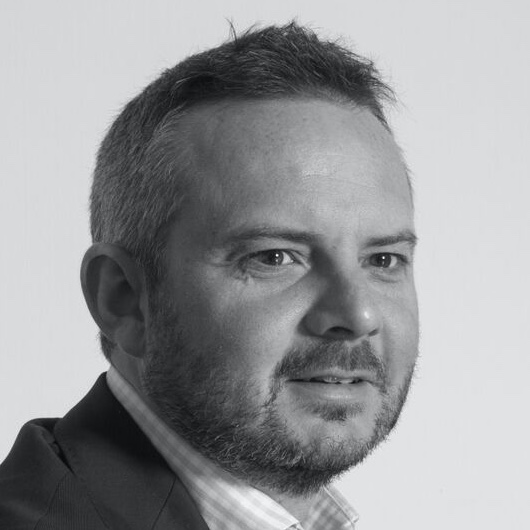Retirement planning is the cornerstone of financial security in your later years. It’s a process that requires careful thought, consistent effort and adjustments over time to ensure your savings can support the lifestyle you envision.
In the UK, the Pensions and Lifetime Savings Association (PLSA) estimates that a “moderate” retirement lifestyle requires approximately £31,700 per year.
This figure provides a useful benchmark for planning, helping you calculate how much you need to save and how to achieve that goal.
However, retirement isn’t one-size-fits-all. For some, it means stopping work entirely, while others prefer a blended plan, gradually reducing work hours to spend more time on hobbies, travel or with family.
This guide outlines essential steps for those 30, 20, or 15 years from retirement, offering practical advice to build a robust financial plan. While this might seem like a long time ahead of retirement, it is essential to understand that the earlier you begin to prepare in earnest, the better potential for the outcome you want in later life.
30 years to go: laying the groundwork
With three decades until retirement, you have a significant advantage: time. This is the ideal period to establish a strong financial foundation that will grow steadily over the years.
The primary focus should be on maximising your savings, ensuring your income is directed efficiently toward long-term goals.
Start by contributing as much as possible to your workplace or private pension. If you receive a pay rise, consider allocating a portion, or all, of it to your pension to boost your savings without impacting your current lifestyle. These contributions benefit from tax relief, which effectively increases the value of your savings, particularly if you’re a higher-rate taxpayer.
In addition to pensions, explore tax-efficient savings vehicles like Stocks and Shares ISAs. These allow your investments to grow free from capital gains tax, making them an excellent complement to your pension.
At this stage, you can afford to take on more investment risk, as you have time to recover from market fluctuations. But make sure investments are diversified.
Debt management is another critical consideration. High-interest debts, such as credit card balances or personal loans, can erode your ability to save.
Prioritise paying these off as quickly as possible, as the interest saved can be redirected to your retirement fund. If you have a mortgage, ensure you’re on a competitive rate and consider overpaying if your budget allows, as this will reduce your financial obligations in retirement.
20 years to go: strengthening your plan
With two decades until retirement, you’re in a phase where you can build on the foundations laid earlier while refining your strategy.
This is a critical time to review your progress and make adjustments to ensure you’re on track. Start by assessing your pension and ISA contributions. If your income has increased, consider raising your contributions to take full advantage of tax relief and compound growth. Even small increases can make a substantial difference over 20 years.
Your investment strategy should remain growth-oriented, but review your approach to ensure it is on track. Diversifying across asset classes – such as equities, bonds, and property funds – to mitigate risk while maintaining potential for strong returns.
If you’re managing your own investments, regularly rebalance your portfolio to align with your risk tolerance and goals. Alternatively, a financial planner can recommend suitable funds or adjust your allocations to optimise performance.
Debt reduction remains a priority. If you’ve cleared high-interest debts, focus on larger obligations, such as car loans or your mortgage. Reducing these liabilities will lower your expenses in retirement, giving you greater financial flexibility.
This is also a good time to reassess your retirement goals. Life circumstances such as marriage, children, or career changes may have shifted your priorities. Perhaps you now want to retire earlier, relocate, or start a business.
These aspirations will influence how much you need to save and how aggressively you should invest. A financial planner can run projections to estimate your future needs and recommend adjustments to your savings rate or investment strategy.
Additionally, consider your health and potential care needs. While these may seem distant, starting a small savings pot for future healthcare costs can provide peace of mind and reduce pressure on your retirement income.
15 years to go: refining and protecting
With retirement 15 years away, you should have a clear picture of your savings and how they align with your retirement goals.
Begin by reviewing your pension pots. If you’ve accumulated multiple pensions from different employers, consider consolidating them into a single plan.
This simplifies management, reduces fees and makes it easier to track performance. However, seek advice before transferring pensions, as some older plans may have valuable benefits, such as final salary schemes (otherwise known as defined benefit or ‘DB’).
Your investment strategy should gradually shift toward lower-risk assets to protect your savings from market volatility. While you still have time to benefit from growth, start increasing allocations to bonds, fixed-income funds, or other stable investments.
A financial planner can help you begin to look at a future ‘glide path’ strategy, which systematically reduces risk as you approach retirement. Avoid making drastic changes too quickly, as you’ll need some growth to outpace inflation over the next 15 years.
If you still have a mortgage, prioritise paying it off before retirement. A mortgage-free home significantly reduces your living costs, allowing your savings to stretch further. If overpaying isn’t feasible, ensure your mortgage term ends before you retire. Similarly, clear any remaining debts to minimise financial strain.
Estimate your future expenses in detail. Factor in essentials like housing, utilities, and food, as well as discretionary costs like travel, hobbies, or supporting family members.
Healthcare costs, including private insurance or potential care fees, should also be considered. These projections will help you set a realistic savings target and identify any shortfall. If you’re behind, increasing pension contributions or delaying retirement by a few years can close the gap.
How a financial planner helps
Retirement planning is deeply personal, shaped by your goals, values and circumstances. Whether you want to travel, downsize, or continue working part-time, a financial planner provides tailored guidance to make your vision a reality.
They can assess your current finances, recommend investment strategies, and navigate complex decisions like pension transfers or income options. Their expertise reduces stress and ensures your plan is robust, adaptable, and aligned with your aspirations.
Retirement planning is a journey that evolves over decades. By starting 30 years out, strengthening your plan at 20 years, and refining it 15 years before retirement, you can build a secure and fulfilling future.
A financial planner’s support at each stage helps you navigate challenges, optimise your savings, and retire with confidence. Take the first step today, and your future self will thank you.
If this blog has raised any questions why don't we have a quick chat?

MD & Certified Financial Planner
A brief meeting might be of interest, especially if you’re unsure just how wealth management and financial planning could help you.
It would only require the investment of an hour or so of your time, and the coffee’s not bad either.
